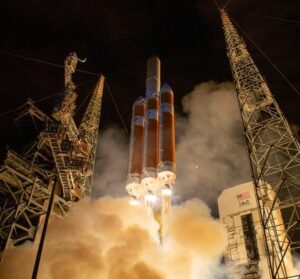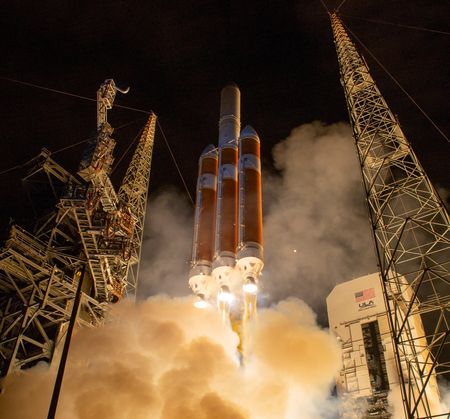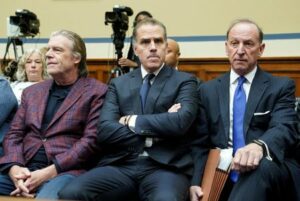(This April 9 story has been corrected to fix ULA executive’s first name to Tory, not Tony, in paragraph 9)
By Steve Gorman
(Reuters) – The U.S. Space Force and a Boeing-Lockheed joint venture sent a secret reconnaissance payload to orbit on Tuesday atop a Delta IV Heavy rocket, the last flight of a workhorse launch vehicle brand that has logged nearly 400 missions dating back to 1960.
The United Launch Alliance-owned rocket, standing roughly 23 stories tall, blasted off from Cape Canaveral Space Force Station in Florida around 1 p.m. EDT (1700 GMT), 12 days after a previous launch attempt was scrubbed at the last minute due to a technical glitch.
A live ULA webcast showed the rocket ascending from the launch tower through partly cloudy skies in a thunder of flames and billowing clouds of exhaust and water vapor.
The flight was intended to deploy a satellite for the National Reconnaissance Office (NRO), a U.S. defense intelligence agency, on a classified mission designated as NROL-70. The Space Force field command confirmed hours later that the launch had successfully delivered the payload to orbit.
It marked the 16th and final flight of a Delta IV Heavy and the last of any of the Delta family of rockets, a space launch dynasty that originated from a modified intermediate-range ballistic missile and grew to include about two dozen increasingly powerful variants.
Since the Thor-Delta rocket was introduced in 1960 at the dawn of the Space Age, the Delta brand has logged 389 launches, with payloads ranging from the world’s first weather and GPS satellites to NASA science missions including eight spacecraft to Mars.
The world’s first passive communications satellite, Echo 1A, and first active communications satellite, Telstar 1, which enabled transatlantic television transmission, were launched by Thor-Deltas in 1960 and 1962, respectively.
Among other space science missions, Delta II rockets launched the twin Mars rovers Spirit and Opportunity in 2003, and a Delta IV sent the Parker Solar Probe to space in 2018.
“The Delta rocket played a pivotal role in the evolution of space flight since the 1960s,” said Tory Bruno, ULA’s president and chief executive officer.
ULA, a partnership of aerospace giants Boeing and Lockheed Martin, is retiring Delta and Atlas rockets in favor of its newly developed Vulcan rocket, which made its inaugural flight in January carrying a privately funded moon lander.
The payload malfunctioned before reaching the moon, but the Vulcan launch from Florida was a success. The Atlas V had 17 more missions booked before it was due to go out of service.
The Delta IV rocket, weighing 1.6 million pounds (725,748 kg) when fully fueled, consists of a triple-booster lower stage that produces 2 million pounds of thrust at launch, and a single-engine upper stage that carries the vehicle’s payload to orbit.
About four minutes in to Tuesday’s flight, after reaching speeds 15 times faster than sound travels, the two side boosters of the rocket’s lower stage separated and fell away, followed by separation and ignition of the upper stage two minutes later.
Around 6-1/2 minutes after launch, the cargo panels protecting the NROL-70 payload during its ascent were jettisoned as the rocket’s upper stage climbed above the edge of space. Live video coverage of the flight was cut off at that point at the government’s request, ULA said.
The precise nature and purpose of the NROL-70 mission has been kept secret.
In a vaguely worded statement before launch, the government said the mission would “strengthen the NRO’s ability to provide a wide range of timely intelligence information to national decision makers, warfighters and intelligence analysts.”
(Reporting by Steve Gorman in Los Angeles; Editing by Richard Chang, Matthew Lewis and Jamie Freed)




